When Chris Heerdegen founded OnDemand Painters, he wasn’t just looking to launch another painting company; he wanted to transform the industry.Rec ...
The Carlos Hesano Story of Building a Restoration Empire
Written by: Carolyn Young
Carolyn Young is a business writer who focuses on entrepreneurial concepts and the business formation. She has over 25 years of experience in business roles, and has authored several entrepreneurship textbooks.
Published on December 8, 2023
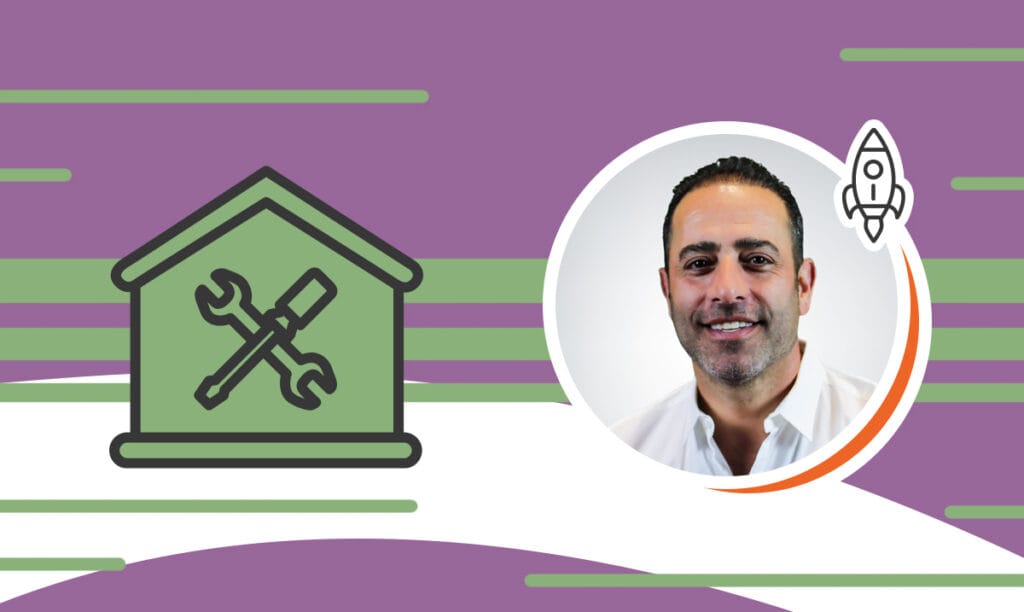
In the bustling world of business, where industries continuously evolve, and competition grows fiercer by the day, it’s always enlightening to hear from those who have not only navigated these turbulent waters but have also emerged as leaders in their fields. Carlos Hesano, the visionary behind DRYmedic Restoration Services, stands as a prime example of such leadership. His journey is a tale of ambition, resilience, and strategic brilliance in the rapidly growing restoration and remediation (R&R) industry. Carlos’s story isn’t just about success; it’s about pioneering a path in an industry that plays a crucial role in helping people recover from disasters.
Embarking on his entrepreneurial voyage in 2014, Carlos founded DRYmedic Restoration Services with a profound mission: to assist individuals and businesses in times of dire need, restoring not just property but peace of mind. His two-decade-long repertoire of business acumen and management skills, gleaned from overseeing numerous service-based companies, equipped him with a unique perspective on how to bring order and harmony back to the chaos caused by home and business disasters. Today, DRYmedic operates over forty trucks, offering top-notch services in water damage restoration, mold remediation, fire damage restoration, and more. But how did Carlos transition from a visionary to an industry-leading expert? In this interview, we delve into the motivations, challenges, strategies, and insights of a man who turned a compassionate vision into a thriving, impactful business.
Active Social Media Channels:
- Facebook: https://www.facebook.com/people/DRYmedic-Restoration-Services/100088702063730/
- LinkedIn: https://www.linkedin.com/company/drymedic/
- Instagram: https://www.instagram.com/drymedic_bloomfield/
Origins and Motivation
SBS – How did you start DRYmedic restoration services, and what was your main motivation behind it? Did your background help?
Carlos – Great questions! We founded the business just over ten years ago. It was late November or early December of 2013. We’re at our ten-year anniversary. We have extensive backgrounds in franchising and construction and general knowledge of service businesses. When we learned a little about the restoration space, we said, “Wow, this fits into our background from an entrepreneurial standpoint, understanding of construction, franchising, and how to build systems.” We quickly realized that there were a lot of friends and family around us who didn’t know who to turn to with these types of disasters.
Even as a contractor in my early days, we would see mold in a basement and just cut it out. We didn’t have a mask, plastic, or everything they use these days. When we were growing up, the awareness wasn’t there of what can happen from prolonged exposure to mold, or if you have allergy or sinus problems, how mold can affect that in different ways. As the consumer and the general market have been educated, we saw a really big need for our community, friends, and family, and we wanted to have an outlet and a place to help them through these types of losses.
SBS – You saw your chance, but it was not only for profit reasons.
Carlos – One of the company mottos is people helping people. That’s what we live by every day. We know that if we put our clients first, we’re going to win in our business. We have that mentality where we take care of the clients first. We take care of the insurance companies, and then we know if we do the right things, success will follow. We feel very strongly about that.
Vision and Success Indicators
SBS – Do you remember the specific moment that led to you knowing that the business you started will be successful and profitable?
Carlos – There was an actual moment. We started servicing clients in January of 2014. Then, in August, about nine months later, we had a catastrophic event here in Michigan, where about five or six major cities had a problem with their sewage ejector pumps. We had 25,000 homes, every single one of which had a sewage backup. It was like Armageddon driving down the street because everybody’s basement was emptied into the street. Their furniture, clothing, cardboard boxes, maybe memorabilia from their family — everything was ruined with contaminated water.
If you had a pulse, you could get a job at that point because everybody was affected in these major, densely populated areas. That was my revelation. In catastrophic events like this, you can go and help hundreds of people over the course of a week or two weeks. They’re so thankful because when you have these types of events, there are not enough contractors to service all the affected people, so you get a lot of people waiting, or they do it themselves.
What we saw as a result of that moving down the road was that the people who couldn’t find a contractor or couldn’t afford one started to have mold. We were getting a lot of mold calls in that area for many years after that, saying, “We were part of the floods of 2014, and we didn’t clean it properly. Now we have some extra dollars, and we want you to come test for mold,” or “We see mold, and we want you to clean it.” That was a defining moment in the business for me to say, “Hey, you know what? This is really important, and there’s a need for this service.”
SBS – Did you have enough staff to handle that much of a damage that was there?
Carlos – We did everything we could at that time. My team and I all worked 16-hour days. We went home, slept, went right back at it. We hired a lot of temp labor. Some people had come from out of state and were looking for work, so we hired temp laborers to help us throw away trash, fill dumpsters, and do things of that nature. We just helped as many people as we could at that time. Through one of our contacts, we cleaned up five or six post offices. We did a lot of residential work as well as some commercial work.
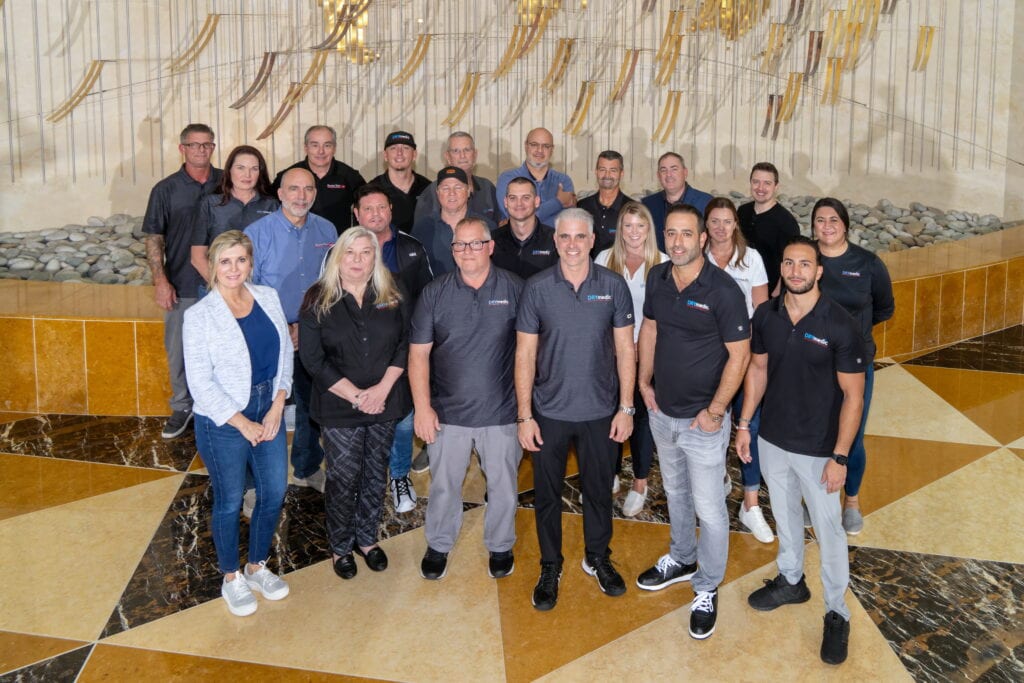
Competitive Edge in Restoration
SBS – Okay, great. Well, you handled it the best you could at the moment. So, the next question is, how do you remain competitive in the restoration industry? What do you believe is important for someone to stay competitive?
Carlos – Yeah, another great question. One of the things that we do to stay relevant is to keep on top of technology. Technology is a big part of our business. We like to refer to ourselves as a marketing and technology company that provides restoration services. The service is just a function of business. Being a marketing-first and technology-first company is what we really strive for, and being ahead of all the technology trends has allowed us to create many efficiencies in our business.
Here’s a small example.
Phoenix is one of the large equipment suppliers for restoration work (air movers, fans, dehumidifiers, and many other associated equipment). They’ve come out with technology where you can monitor remotely so you can check in from many miles away to see how your equipment is doing. Is it still turned on? What are the humidity readings within the house? How many pints have you pulled from the home within a day? Now, it doesn’t completely eliminate the need for humans to go in and still do the physical monitoring, but it gives us a very good indicator of if we’re moving the atmosphere within that home or business.
One of the big things we need to do as a contractor is to control the environment. When you have water damage inside a home or business, the humidity is elevated naturally because there’s so much water, so you have to draw that humidity out of the air and bring it back to acceptable levels. The key to controlling the environment is not allowing more damage to happen. You’re pausing it until you can get there and move to the recommended standard.
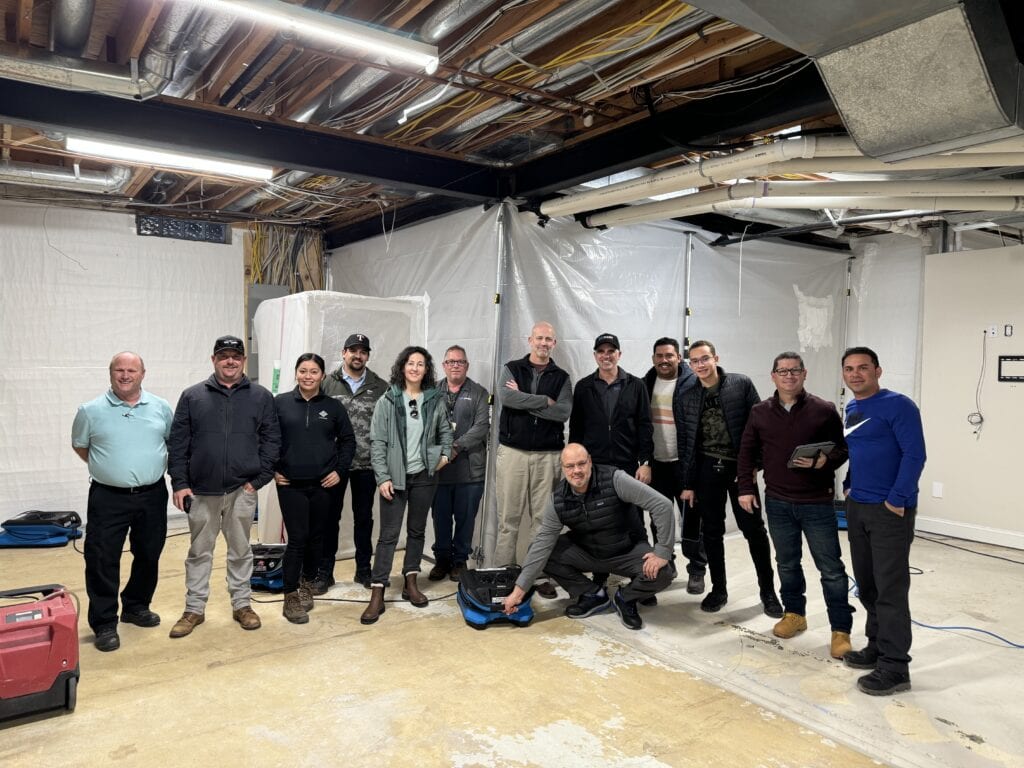
Another quick example is a LIDAR camera, which comes on all the new iPhones. With the LIDAR technology, you can measure a room with your phone and get exact measurements within an inch of a whole wall, window openings, door openings, etc. Someone would take 45 minutes to sketch a loss. We can do it in 10 or 15 minutes now with our phones, and it’s much more accurate. So, this is just another example of how we utilize technology to stay ahead of the competition. We see that if you are unwilling to change, it leaves you far behind. We’re always willing to change and embrace new technology to see how we can create efficiencies in our business to make a better client experience. That’s really what it’s all about. People just have to embrace change. Our staff has been very used to it over the last 10 years.
Initial Challenges and Scaling
SBS – What were some initial challenges you faced during the first years?
Carlos – I have a really good answer to this question that I think will be very helpful for readers. There’s a big difference when you’re growing a business where you’re able to separate yourself from the business. That’s what we call “scaling the business.”
The big challenge we had within the first year or two was documenting every move we made and creating the process and system so that it could be replicated in the future. The biggest part of restraining somebody from growing their business is that they haven’t created the proper systems and processes people can follow.
SBS – SOPs?
Carlos – Exactly. Standard operating procedures. We have a task-based CRM that helped us grow our business. We knew that if we were on vacation, we could log into the system and see if the work was properly done. We knew that we created a system and process.
That was the biggest challenge, and what I believe to be the biggest challenge in any young entrepreneur’s business — how do you create systems and processes that allow you to work on the business rather than in the business? That’s really what we’ve worked very hard towards. That would also be some of my advice to young entrepreneurs: Create systems and processes that allow you to scale the business and replicate what one crew or group or pod of your business is doing so that you can have many of them.
SBS – How have you scaled your business from inception to operating dozens of trucks?
Carlos – It just has to do with the answer to the last question. We were able to scale up. We’re over 50 trucks now in Michigan on the retail side. We’ve had phenomenal growth, and it all has to do with the systems and processes put in place and the ability to scale the business.
If you do a great job for a client, what are the key components that you pulled away from why you were able to give that client such a great experience? It’s communication, culture, and the ability to educate and do all those things that create a great customer experience. When you have a system in place where step-by-step instructions are there for your staff to follow, you will be able to scale the business and take on more work.
So, part of the answer to the question is a disciplined approach. As we created profit within our business, we religiously reinvested a very high percentage of that profit back into the business. That doesn’t mean just buying more vans, trucks, or equipment. We invested in our people. We invested in training them properly on the systems we have built, allowing our staff a path to move from one position to the other. We created new positions along the way. The result of the culmination of all those things really allowed us to scale the business.
It’s following the systems and the guidelines and continuing to improve them. It’s the discipline to reinvest in your business, including equipment, vehicles, personnel, staff training, trainers — everything you can imagine that allows us to make the business bigger. That’s really what it is.
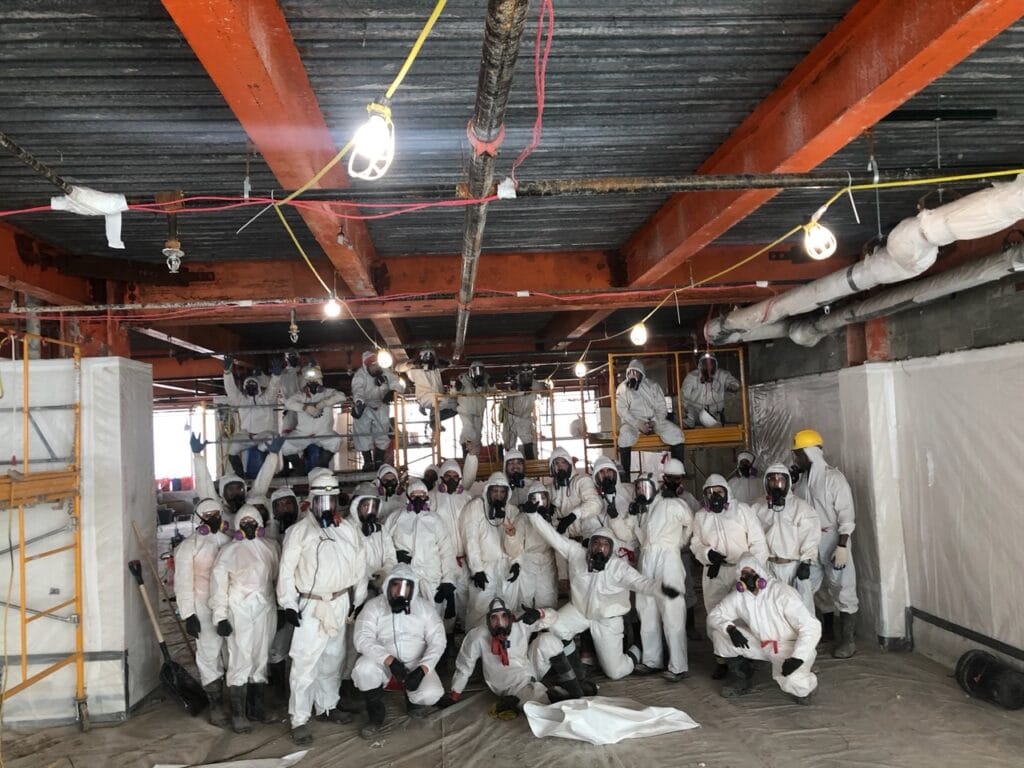
Impact of Diverse Background in Business
SBS – How did your background help regarding your business, like from the legal and marketing side?
Carlos – I don’t want to date myself, but at my age, I had already owned some businesses prior to starting the restoration company. I have a background in all the things that you mentioned — marketing, legal, finance, operations, and everything else you can imagine that you would need to operate a business. So, those skill sets and experiences that I had definitely contributed to the success of the business.
What I would say, though, is we always took a relentless approach to marketing. Marketing is the big driver of our business, and we were not afraid to spend marketing dollars. A lot of the mentality when you’re growing a business is, “I’m spending all this money on Google,” for example, “and it’s not working.” Then you say, “I’m spending $1, and now I want to cut it back to $0.50.” We never took that approach. If it wasn’t working, I spent $2; I didn’t spend $0.50.
I will give you the wording that I use with my staff and many of my franchisees that we have come into the system — keep your foot on the gas pedal. Never let up. That’s the relentless approach we took to marketing that was driven by some of those past experiences. Don’t let up; you’ve got to keep going with it.
When times are tough, your competitors are feeling the same way that you are, and they usually back off. People who are aggressive and able to commit to spending additional dollars typically will win, and you’ll start to see over time that your competition can’t survive. Eventually, they come and work for you because they realize that being in business for themselves is not the answer.
Just because you own your own business doesn’t mean you’re an entrepreneur. They’re two totally different things. When you’re an entrepreneur, you can or cannot own your own businesses, but when you’re a business owner, it doesn’t automatically make you eligible to be called an entrepreneur.
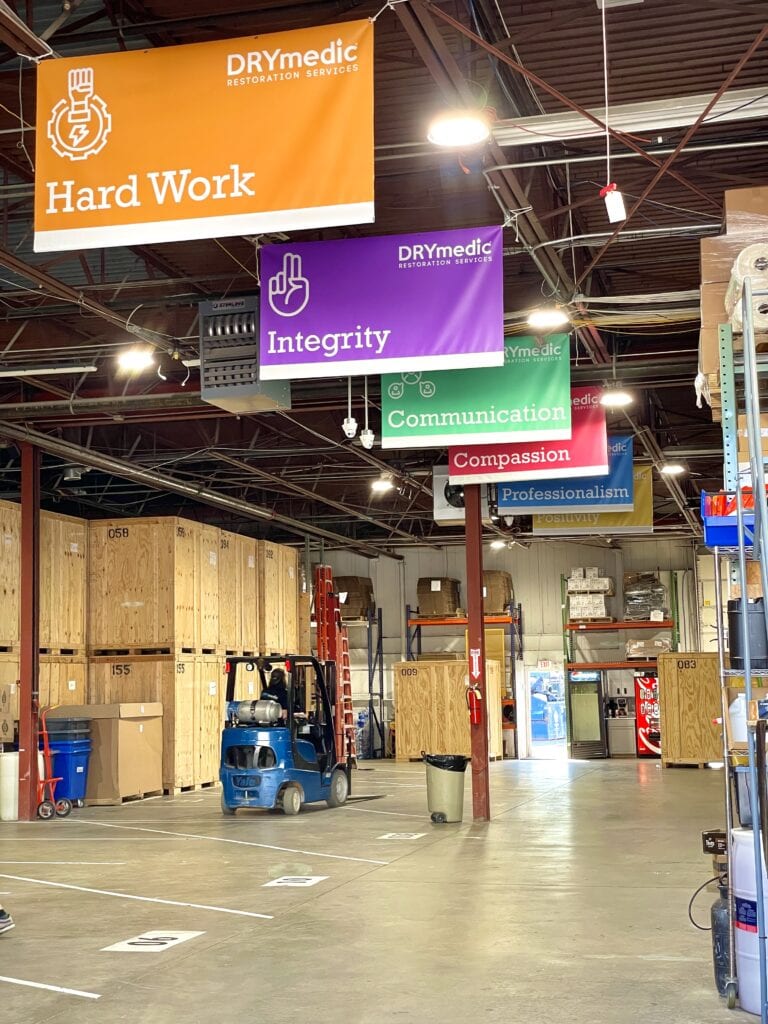
Customer Satisfaction Strategies
SBS – What strategies or procedures do you use to ensure that people have 100% customer satisfaction with your services?
Carlos – A lot of that has to do with some of the things I touched on earlier. We are very focused on the culture within this organization — a lot of smiling people walking around every day. We have testing that we use to gauge hiring and employee status and things of that nature, like compassion, communication, and integrity. These are not just words on a wall to us as a business. These are words that we live by every day.
Just this morning, we had our employee-of-the-month meeting, so we had about 75 to 80 employees in our warehouse. We have three different divisions that we run within DRYmedic — our emergency side, our personal property side, and our reconstruction side. We are a full-service company, and we hand out nine employee of the month awards. We hand out three per division: a third, a second, and a first place. They get a cash prize for second and third place, and then we have a really cool prize for the first-place winner, a spin-the-wheel. So, it’s literally what it sounds like. You spin the wheel, and you could get, for example, three PTO days or a $500 gift card to Costco. You could get a plethora of different prizes.
By creating that culture, we’re creating the ability for the employees to have something to work towards, whether it’s great reviews from a consumer or whatever. Integrity and honesty are two huge things. We’re inside of people’s homes and businesses. We’re touching their personal property that’s just been affected by a loss, so it’s important for us to have those cultural values instilled in all our employees. That creates a great customer experience because people live by integrity, honesty, and communication. These are embedded in our employees.
As we see that people don’t fit, we typically don’t have a long-lasting relationship with those employees. We have a great tenure with many employees here because they understand the culture. That’s all the way from the ownership down. I can pretty much tell you every one of those 80 people’s names on a first-name basis. We know them all.
We have an open-door policy. If they have problems at home with their family, children, spouses, or significant others, they come and talk to me and the ownership team. We embrace that family type of feel and our core values. As a result, it allows us to create the most amazing customer experience because all of our employees are happy to be at work. They’re happy to help people. We’re people helping people. That’s what we do every day.
Collaboration with Insurers
SBS – How does DRYmedic work with the insurance companies, and what have you learned from the process that could help others working with third-party payers?
Carlos – Another great question! So, let’s take New York as an example. Let’s say you have an insurance company like Progressive, for example. I’m sure you’ve seen their TV commercials. When you think of Progressive in New York, you say, “It’s such a big company,” but only four or five adjusters work for Progressive. They’re the same people every time, representing hundreds or hundreds of thousands of homeowners within the area.
As the contractor, I’m dealing with 25% of my Progressive losses, so it’s the same adjuster that’s representing Progressive, and we deal with them. We tend to figure out what the guidelines are for each insurance company. AAA is going to have different guidelines than Progressive. You work with the insurance adjusters within those guidelines. You can establish a relationship and build trust with those adjusters that you’re going to do what’s right for the customer. You will give them their home or business back in a pre-loss condition.
This is a keyword terminology in our business. The insurance policies essentially provide that you’re going to get your home or business back to how it was before this happened. That’s what we work hard towards — working with the adjusters, building trust, and finding the scope and cost associated with getting them back to that point. Nothing’s easy, but I’m saying it’s a smaller world than some think.
Advice for Entrepreneurs
SBS – I understand. So, what kind of advice would you give entrepreneurs starting today? Is there something that you could’ve done differently if you knew it then?
Carlos – This is very personal, as far as my thought process here, and I’ve always really shared it with other young entrepreneurs and people wanting to start their businesses. Many young entrepreneurs or business owners take the world on their shoulders. They want to do everything themselves and say, “I don’t want to have any business partners because I don’t want to have somebody else that’s going to tell me what to do or do certain things.”
My mentality is actually the opposite. We’ve been able to build DRYmedic because we have a mentality that involves sharing. From day one, we have brought in partners who co-founded the business with me. We’ve brought in additional partners along the way. I always give a math analogy when it comes to business partners who are committed and working in the business every day: One plus one is not two. It’s three, or four, or five. You can accomplish so much more with somebody else who’s like-minded and has the same vision than you could ever do by yourself. We’ve seen the effect of one plus one plus one plus one is not five, it’s ten, it’s 15. it’s so much more.
When you know that there’s somebody backing you up, you know that there’s somebody with the same vision you have. So, my advice would be to consider aligning yourself with business partners who have the same vision and the same interests as you, who come from the same moral backgrounds, and who fit into the core values and culture that you’re trying to create within the organization that you’re starting. That would be my answer.
SBS – I agree. When you are surrounded by these kinds of people, it can be like an easy push for everything else. But if you’re surrounding yourself with people putting you down, I can understand why some decide to be a one-man show.
Subscribe to Our Newsletter
and gain insider access to cutting-edge business insights and trends.
Featured Resources
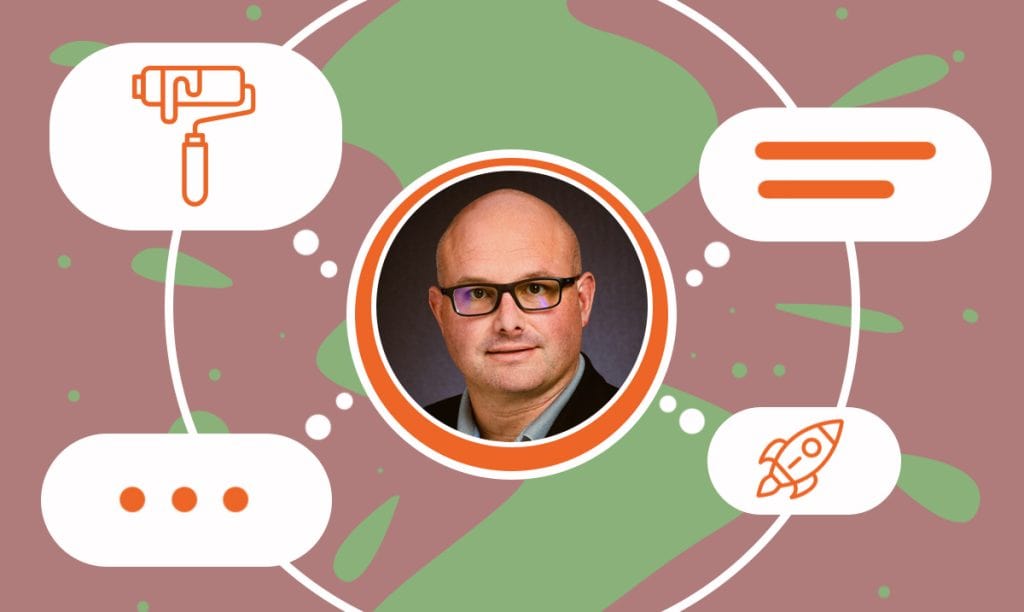
How Chris Heerdegen Built a Multi-City Painting Business
Published on October 4, 2024
Read Now
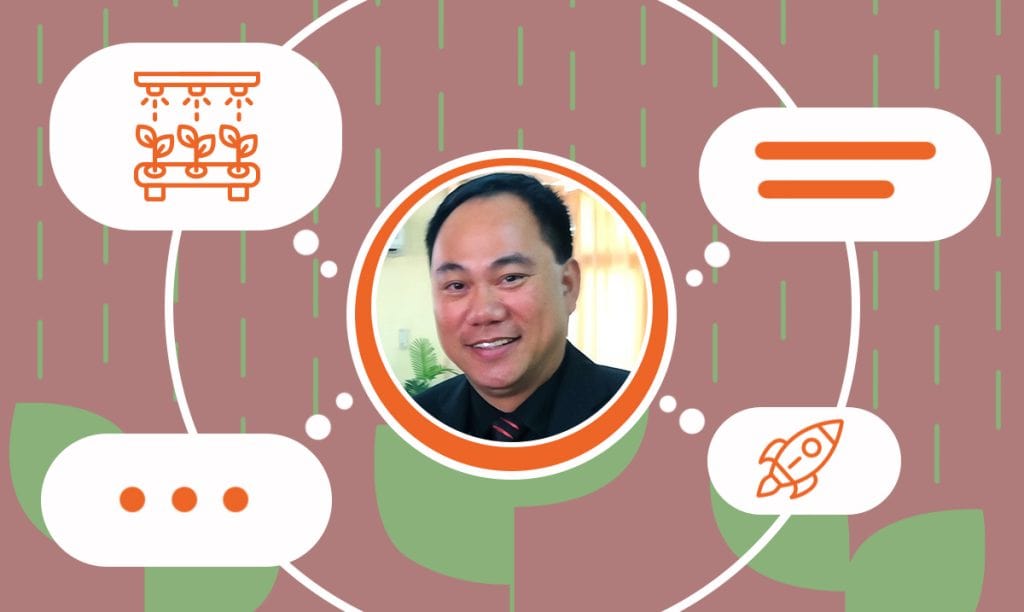
How a Retired Veteran Built Kern County’s First Hydroponic Farm
Published on September 6, 2024
Gerry Mateo, a retired veteran, found an unexpected opportunity during the pandemic with the creation of FilAm Vets Hydroponics Farm. As the firsthy ...
Read Now
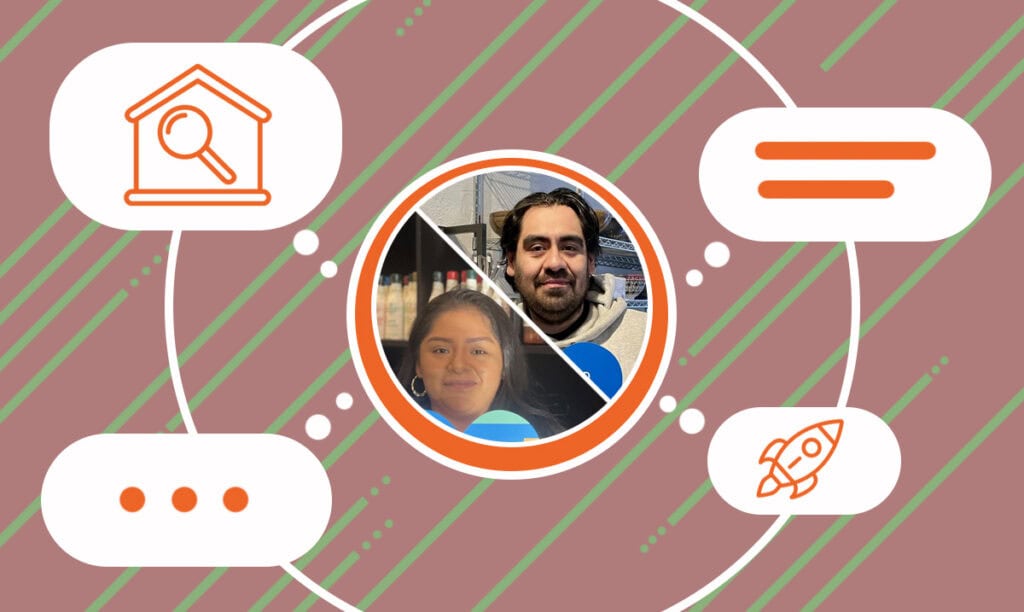
How Family-Owned Kitchen Supplies Business Thrives in Brooklyn
Published on June 25, 2024
In the heart of Clinton Hill, Brooklyn, Indulge Kitchen Supplies stands as a testament to the passion and dedication of its founders, Luis and AmyTa ...
Read Now
Comments